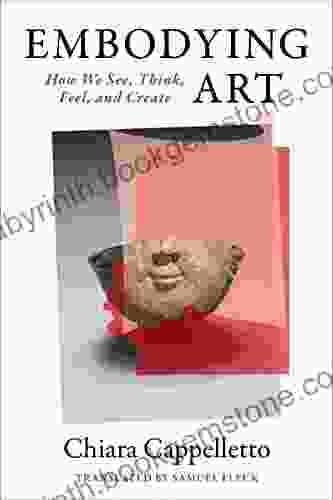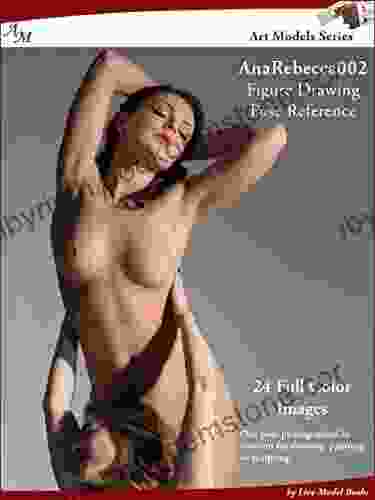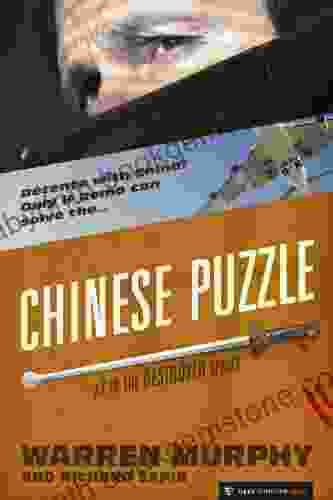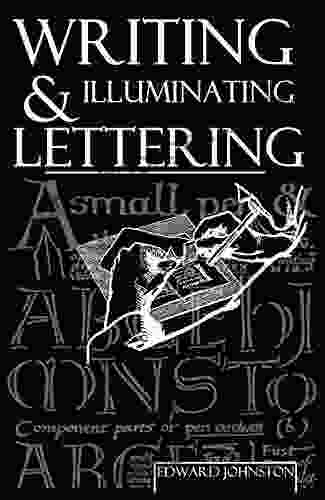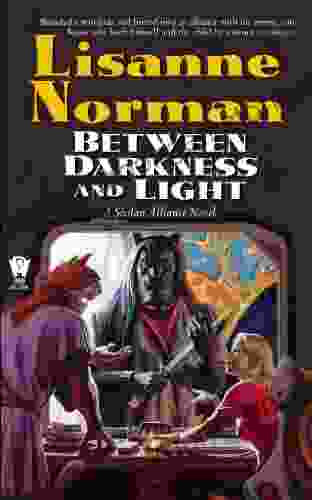How We See, Think, Feel, and Create: Exploring the Interplay of Perception, Cognition, and Creativity

4.1 out of 5
| Language | : | English |
| File size | : | 3941 KB |
| Text-to-Speech | : | Enabled |
| Screen Reader | : | Supported |
| Print length | : | 53 pages |
Our human experience is a tapestry woven from the threads of perception, cognition, and creativity. These intricate processes, unfolding within the depths of our minds, shape our understanding of the world, our interpretation of events, and our ability to express ourselves. In this article, we embark on a captivating journey to explore the interplay of these fundamental human capacities.
Perception: The Gateway to Reality
Perception is the process through which we gather information from our surroundings and interpret it to form our understanding of the world. Our senses—sight, hearing, smell, taste, and touch—act as gateways to reality, transmitting sensory data to our brains for processing.
Vision, the dominant sense for most humans, relies on the complex machinery of our eyes and brain to convert light into images. Our brains skillfully interpret these images, identifying shapes, colors, and objects. Similarly, hearing involves the conversion of sound waves into neural signals, enabling us to perceive and interpret speech, music, and environmental sounds.
Smell, taste, and touch provide us with rich and nuanced experiences. Odors activate receptors in our nasal passages, triggering neural responses that evoke memories and emotions. Taste buds on our tongues detect chemical compounds in food and beverages, giving rise to flavor perceptions. Touch, mediated by specialized nerve endings in our skin, allows us to sense pressure, temperature, and pain.
Cognition: The Engine of Thought
Cognition encompasses the mental processes involved in acquiring, storing, and using knowledge. It empowers us to think, reason, problem-solve, and make decisions. Our brains, with their astounding neural networks and intricate synapses, serve as the engines of cognition.
Memory, a cornerstone of cognition, enables us to encode, store, and retrieve information. Explicit memory allows us to consciously recall facts and events, while implicit memory operates subconsciously, influencing our behavior and skills.
Attention, another key cognitive function, allows us to focus and direct our mental resources towards specific stimuli or tasks. It filters out distractions and enables us to process information efficiently.
Language, a uniquely human cognitive ability, allows us to communicate, express ideas, and share knowledge. The brain's language areas, including Broca's and Wernicke's areas, facilitate speech production and comprehension.
Emotion: The Crucible of Feeling
Emotions are complex psychological states that involve subjective feelings, physiological responses, and behavioral expressions. They color our experiences, influence our thoughts, and motivate our actions.
The brain's limbic system, particularly the amygdala and hippocampus, plays a central role in emotional processing. The amygdala detects potential threats and triggers fear responses, while the hippocampus helps us form and retrieve memories associated with emotions.
Emotions manifest in physiological changes, such as increased heart rate, sweating, and muscle tension. Facial expressions, body language, and vocal cues communicate our emotions to others.
Creativity: The Spark of Innovation
Creativity is the ability to generate original and meaningful ideas, products, or experiences. It involves divergent thinking, which explores multiple perspectives and generates novel solutions, and convergent thinking, which focuses on evaluating and selecting the best ideas.
The brain's prefrontal cortex, responsible for executive functions such as planning and decision-making, is heavily involved in creativity. The default mode network, a set of brain regions active when the mind is at rest, also contributes to creative thinking.
Inspiration, a key aspect of creativity, often arises from unexpected connections between seemingly unrelated ideas. The subconscious mind, particularly during dreams or periods of relaxation, can facilitate such connections.
The Interplay: A Symphony of Mind
Perception, cognition, and creativity are not isolated processes but rather interact in a continuous and dynamic interplay. Our perception of the world influences our thoughts, which in turn shape our emotions and creative expression.
For instance, a beautiful sunset can evoke feelings of awe and wonder, inspiring a poem or a painting. Conversely, negative emotions can cloud our perception and hinder our cognitive abilities. A fearful person may perceive a harmless situation as a threat, leading to irrational thoughts and behaviors.
Creativity, fueled by both perception and cognition, allows us to synthesize new ideas and solutions. A scientist may observe a natural phenomenon and creatively apply their knowledge to develop a groundbreaking invention.
The human mind is an awe-inspiring symphony of perception, cognition, and creativity. Our capacity to perceive the world, process information, experience emotions, and create something new is a testament to the boundless possibilities of the human spirit. By understanding the intricate interplay of these processes, we gain a deeper appreciation for our own minds and the wonders they are capable of producing.
As we continue to unravel the mysteries of the human brain and its cognitive functions, we unlock the potential for transformative discoveries in fields such as education, healthcare, and artificial intelligence. The future holds endless possibilities as we harness our understanding of perception, cognition, and creativity to shape a better world.
4.1 out of 5
| Language | : | English |
| File size | : | 3941 KB |
| Text-to-Speech | : | Enabled |
| Screen Reader | : | Supported |
| Print length | : | 53 pages |
Do you want to contribute by writing guest posts on this blog?
Please contact us and send us a resume of previous articles that you have written.
 Best Book
Best Book Page Flip
Page Flip Bookshelf
Bookshelf Literary loom
Literary loom Chapter
Chapter Bookish
Bookish PageTurner
PageTurner Bibliophile
Bibliophile Story
Story Inkwell
Inkwell Bookworm
Bookworm Labyrinth
Labyrinth Plot Twist
Plot Twist Prose
Prose Paperback
Paperback Storyteller
Storyteller Sanctuary
Sanctuary Fiction
Fiction Reading
Reading Chronicle
Chronicle Read
Read Dawn Turner Trice
Dawn Turner Trice S A Snyder
S A Snyder Tim Judah
Tim Judah Dan Bigley
Dan Bigley Tracy Lambert
Tracy Lambert Kyle Widner
Kyle Widner Sam Branson
Sam Branson Tom Poland
Tom Poland Kristina Mcmorris
Kristina Mcmorris David Walton
David Walton Tana Stone
Tana Stone Daniel Abraham
Daniel Abraham Zeena Shah
Zeena Shah C F Jernigan
C F Jernigan Marisol Enchufa
Marisol Enchufa Jon Breakfield
Jon Breakfield Dale Robinson
Dale Robinson Clayton Thomas Muller
Clayton Thomas Muller Tinia Montford
Tinia Montford Fiona Ferris
Fiona Ferris David W Galenson
David W Galenson Rami Yelda
Rami Yelda R Allen Chappell
R Allen Chappell Michael Shnayerson
Michael Shnayerson Craig Mod
Craig Mod Craig A Falconer
Craig A Falconer Pearl Tate
Pearl Tate Steve Reifenberg
Steve Reifenberg Fethi Mansouri
Fethi Mansouri T R Napper
T R Napper Ian Douglas
Ian Douglas David Riley
David Riley Reprint Edition Kindle Edition
Reprint Edition Kindle Edition Eva Heller
Eva Heller Cynthia Royce
Cynthia Royce Ketut Suasti
Ketut Suasti Lan Sluder
Lan Sluder S M Anderson
S M Anderson Joe Starita
Joe Starita John Luther Adams
John Luther Adams Luca Turin
Luca Turin Jerry Beck
Jerry Beck Jon May
Jon May Craig Johnson
Craig Johnson Helen Augur
Helen Augur James Seabright
James Seabright Donna Jackson Nakazawa
Donna Jackson Nakazawa Daigo Murasaki
Daigo Murasaki Jessica Kerwin Jenkins
Jessica Kerwin Jenkins Mary Alice Monroe
Mary Alice Monroe Terry Darlington
Terry Darlington Ian Whitaker
Ian Whitaker Piera Sonnino
Piera Sonnino Daniel Burleigh Parkhurst
Daniel Burleigh Parkhurst Nancy Marchant
Nancy Marchant Matthew Quirk
Matthew Quirk Roberto Pedreira
Roberto Pedreira Connie Mcbride
Connie Mcbride Mike Katz
Mike Katz Niall Teasdale
Niall Teasdale Harry Lorayne
Harry Lorayne Deborah Davis
Deborah Davis Jeanne Farr Mcdonnell
Jeanne Farr Mcdonnell John Baxter
John Baxter Douglas Preston
Douglas Preston Frances Dinkelspiel
Frances Dinkelspiel David G Hartwell
David G Hartwell Paula Giddings
Paula Giddings Prince
Prince Colleen Hall
Colleen Hall Cody Whitfill
Cody Whitfill Stephen Kinzer
Stephen Kinzer Julie Lythcott Haims
Julie Lythcott Haims Dan Sugralinov
Dan Sugralinov Dan Diggles
Dan Diggles Olivia Campbell
Olivia Campbell Dennis Lehane
Dennis Lehane Sean Hartlieb
Sean Hartlieb William J Burns
William J Burns Susan Yeates
Susan Yeates Dahlma Llanos Figueroa
Dahlma Llanos Figueroa Ursula K Le Guin
Ursula K Le Guin Dale Brown
Dale Brown Irene Aylworth Douglass
Irene Aylworth Douglass Thaddeus Carhart
Thaddeus Carhart Craig Melvin
Craig Melvin Kati Marton
Kati Marton Les Standiford
Les Standiford Ernest J Gaines
Ernest J Gaines Gabrielle Selz
Gabrielle Selz Hannah Strong
Hannah Strong Colin Souness
Colin Souness Xinran
Xinran Dan Grunfeld
Dan Grunfeld Joshua M Greene
Joshua M Greene Roy Simmons
Roy Simmons Jeffrey Alford
Jeffrey Alford Robert De La Sizeranne
Robert De La Sizeranne Joshua T Calvert
Joshua T Calvert Marie Brennan
Marie Brennan Mia Michaels
Mia Michaels Eleanor Ford
Eleanor Ford Karl Johnson
Karl Johnson Sara Wheeler
Sara Wheeler Ella Barrick
Ella Barrick Janet Koplos
Janet Koplos Michelle Damiani
Michelle Damiani Daily Language Learning
Daily Language Learning Joy Deja King
Joy Deja King James Patterson
James Patterson Brandon Q Morris
Brandon Q Morris Jodi Picoult
Jodi Picoult Danielle Krysa
Danielle Krysa Linda Riesenberg Fisler
Linda Riesenberg Fisler Clive Cussler
Clive Cussler Robert Silverberg
Robert Silverberg Michael Henry
Michael Henry Olan Thorensen
Olan Thorensen Irene Levin Berman
Irene Levin Berman Lisanne Norman
Lisanne Norman Nick Lyons
Nick Lyons Em Brown
Em Brown Jerry Brotton
Jerry Brotton Cornelius N Grove
Cornelius N Grove Tony Pike
Tony Pike Ward Larsen
Ward Larsen Jaclyn Bailie
Jaclyn Bailie Marie Killilea
Marie Killilea Henning Nelms
Henning Nelms Crispin Sartwell
Crispin Sartwell Thefirstdefier
Thefirstdefier Dakota Krout
Dakota Krout Ingrid Sischy
Ingrid Sischy Jay C Labarge
Jay C Labarge Elizabeth May
Elizabeth May Diane Cardaci
Diane Cardaci D J Holmes
D J Holmes Richard K Morgan
Richard K Morgan Cristina Salat
Cristina Salat Nigel Barley
Nigel Barley Garry Mcgee
Garry Mcgee Eat Like A Local
Eat Like A Local Robert Isenberg
Robert Isenberg Saad Z Hossain
Saad Z Hossain Craig Ferguson
Craig Ferguson Lorraine Bartlett
Lorraine Bartlett David Mikics
David Mikics David Maraniss
David Maraniss Max Allan Collins
Max Allan Collins Gina Mckinnon
Gina Mckinnon Trenae
Trenae Lisa Morton
Lisa Morton Loretta Outwater Cox
Loretta Outwater Cox Cory Doctorow
Cory Doctorow D Scott Bowers
D Scott Bowers Fred Ladd
Fred Ladd Jordan Matter
Jordan Matter D Dauphinee
D Dauphinee Karolyn Kiisel
Karolyn Kiisel Jennifer Thompson Cannino
Jennifer Thompson Cannino Marc Taro Holmes
Marc Taro Holmes Kate Moore
Kate Moore Dakota James
Dakota James William Evans
William Evans Criss Angel
Criss Angel Dallas Shaw
Dallas Shaw Culture Smart
Culture Smart Peter Ninnes
Peter Ninnes Deanna Amodeo
Deanna Amodeo Coryn Anaya Clarke
Coryn Anaya Clarke Cynthia Leal Massey
Cynthia Leal Massey Leila Guerriero
Leila Guerriero Susan Cross
Susan Cross Jane Sutcliffe
Jane Sutcliffe G B Edwards
G B Edwards Connie Willis
Connie Willis Henry Koster
Henry Koster Margaret Coker
Margaret Coker Joy Castro
Joy Castro Karen Cheung
Karen Cheung Jay Ryan
Jay Ryan Sean Egan
Sean Egan Mark Dawson
Mark Dawson Marius Kociejowski
Marius Kociejowski Liza Rodman
Liza Rodman J C Romero
J C Romero Jeff Tanyard
Jeff Tanyard Yuri Ulengov
Yuri Ulengov Cyril W Beaumont
Cyril W Beaumont Susan Linden Emde
Susan Linden Emde Eric Musgrave
Eric Musgrave Grace Goodwin
Grace Goodwin Cristela Alonzo
Cristela Alonzo Lina Rather
Lina Rather Ernst Bergen
Ernst Bergen D K Holmberg
D K Holmberg John Humphries
John Humphries Clifford Irving
Clifford Irving Stephen Brooks
Stephen Brooks Marya Hornbacher
Marya Hornbacher Synithia Williams
Synithia Williams Michelle Brown
Michelle Brown Collins Dictionaries
Collins Dictionaries Natasha Sims
Natasha Sims Carrie Stuart Parks
Carrie Stuart Parks Dana Sachs
Dana Sachs Mary Paik Lee
Mary Paik Lee Cynthia Newcomer Daniel
Cynthia Newcomer Daniel Craig Briggs
Craig Briggs Clementina Oluchi Augustine
Clementina Oluchi Augustine David Bischoff
David Bischoff Parvati Sharma
Parvati Sharma Dennis Valder
Dennis Valder Corky Parker
Corky Parker True Kelley
True Kelley Douglas Century
Douglas Century James Rosenquist
James Rosenquist Conn Iggulden
Conn Iggulden Eric Lax
Eric Lax John Grisham
John Grisham Emma Larkin
Emma Larkin Ben Ohmart
Ben Ohmart M R Forbes
M R Forbes Maya Angelou
Maya Angelou V D Bucket
V D Bucket Kelly Gay
Kelly Gay Cookie Mueller
Cookie Mueller Sarah Thornton
Sarah Thornton Thrive Language Audiobooks
Thrive Language Audiobooks Jennifer M Eaton
Jennifer M Eaton T D Lake
T D Lake Dan Popp
Dan Popp Gerda Weissmann Klein
Gerda Weissmann Klein George Saunders
George Saunders Henry James
Henry James William Schoell
William Schoell Leah Gallo
Leah Gallo June Emerson
June Emerson L E Modesitt Jr
L E Modesitt Jr Colin Jones
Colin Jones Gael Berton
Gael Berton Cp Mchugh
Cp Mchugh Kenya Clark
Kenya Clark Eric Trueheart
Eric Trueheart Norman Hathaway
Norman Hathaway Fiona Davis
Fiona Davis Olivia Dade
Olivia Dade Minal Hajratwala
Minal Hajratwala Pierre Alex Jeanty
Pierre Alex Jeanty Mark Cramer
Mark Cramer Clive Johnson
Clive Johnson Brad Olsen
Brad Olsen Gerry Virtue
Gerry Virtue Eric Jerome Dickey
Eric Jerome Dickey Donna Zakowska
Donna Zakowska Dan Simmons
Dan Simmons Keith Recker
Keith Recker Dave Willmarth
Dave Willmarth Damion Hunter
Damion Hunter Tony Rafael
Tony Rafael Khadizhat Witt
Khadizhat Witt Wyclef Jean
Wyclef Jean Maggie Rowe
Maggie Rowe Gabrielle Zevin
Gabrielle Zevin J J Green
J J Green Coert Voorhees
Coert Voorhees Ann Fessler
Ann Fessler Sara Ackerman
Sara Ackerman Craig W Stanfill
Craig W Stanfill Leslie Cabarga
Leslie Cabarga Cornelius C Kubler
Cornelius C Kubler Nick Snelling
Nick Snelling Terri Kozlowski
Terri Kozlowski K C Jones
K C Jones Cristy C Road
Cristy C Road Laura Donnelly Bethmann
Laura Donnelly Bethmann Jake Spicer
Jake Spicer Harold P Howard
Harold P Howard Euclides Da Cunha
Euclides Da Cunha Connie Malamed
Connie Malamed Warren Murphy
Warren Murphy Dan Fox
Dan Fox Ellie Taylor
Ellie Taylor Dale Pollock
Dale Pollock Marcus Richardson
Marcus Richardson Rory Miller
Rory Miller Dani Dyer
Dani Dyer Rayna Tyler
Rayna Tyler Massimiliano Musina
Massimiliano Musina Dan Gheno
Dan Gheno Mia Black
Mia Black Jim Hutchinson
Jim Hutchinson Dallen J Timothy
Dallen J Timothy Serena Gilbert
Serena Gilbert Co Spinhoven
Co Spinhoven Isadora Duncan
Isadora Duncan Twyla Tharp
Twyla Tharp Marc Canter
Marc Canter Stephen Armstrong
Stephen Armstrong Issa Rae
Issa Rae T J Clark
T J Clark Roy Kinnard
Roy Kinnard Sujean Rim
Sujean Rim Lee Feigon
Lee Feigon L A Braun
L A Braun Tom Geng
Tom Geng Insun Lee
Insun Lee Ted Andrews
Ted Andrews Danny Trejo
Danny Trejo Craig Carey
Craig Carey Love Belvin
Love Belvin Lorne Ryburn
Lorne Ryburn Coryne Hall
Coryne Hall Cynthia Saltzman
Cynthia Saltzman Peter Hanson
Peter Hanson Robert Appleton
Robert Appleton Janet Catherine Berlo
Janet Catherine Berlo David Cousens
David Cousens Cliff Mass
Cliff Mass Sarena Ulibarri
Sarena Ulibarri John Tanner
John Tanner Robert E Innis
Robert E Innis Carlos M N Eire
Carlos M N Eire Mancho Soto
Mancho Soto Sue Tabashnik
Sue Tabashnik Dk Eyewitness
Dk Eyewitness John Parascandola
John Parascandola Jason M Hough
Jason M Hough Neal Stephenson
Neal Stephenson Lisa Yaszek
Lisa Yaszek Taylor Fuller
Taylor Fuller W B Yeats
W B Yeats Hannah Hart
Hannah Hart Pat Grillo
Pat Grillo Jennifer Brozek
Jennifer Brozek R P Jones
R P Jones Dan Zehr
Dan Zehr Dan X Solo
Dan X Solo Clyde D Souza
Clyde D Souza Yuriko Saito
Yuriko Saito Dana Facaros
Dana Facaros Diana Friel Mcgowin
Diana Friel Mcgowin David Kroese
David Kroese John Logan
John Logan Beverly Jenkins
Beverly Jenkins Ian Frazier
Ian Frazier Alexa West
Alexa West Jessica Walstad
Jessica Walstad Porochista Khakpour
Porochista Khakpour Jeromy Hopgood
Jeromy Hopgood Curatoria Draconis
Curatoria Draconis Sandee Cohen
Sandee Cohen Torre Deroche
Torre Deroche Jacques D Amboise
Jacques D Amboise Virginia Matheson Hooker
Virginia Matheson Hooker Geoff Saunders
Geoff Saunders Todd Geers
Todd Geers Karen O Brien
Karen O Brien Meredith Little
Meredith Little Harvey J Kaye
Harvey J Kaye Kathryn Mcmaster
Kathryn Mcmaster Graham Wilson
Graham Wilson Daniel L Bray
Daniel L Bray Xiaolu Guo
Xiaolu Guo Helen Armstrong
Helen Armstrong Gerald Everett Jones
Gerald Everett Jones Melissa Stephenson
Melissa Stephenson Karen Stocker
Karen Stocker Nelson Demille
Nelson Demille J A Johnstone
J A Johnstone Tc Manning
Tc Manning Joan D Vinge
Joan D Vinge Steven Skaggs
Steven Skaggs David E Wilkins
David E Wilkins Cyrus Highsmith
Cyrus Highsmith Kevin J Anderson
Kevin J Anderson J Z Foster
J Z Foster Colin Thubron
Colin Thubron Hyeonseo Lee
Hyeonseo Lee Cynthia Clampitt
Cynthia Clampitt Dan Abnett
Dan Abnett Yair Lapid
Yair Lapid Andrew Patrick Nelson
Andrew Patrick Nelson Ronald G Knapp
Ronald G Knapp Domnica Radulescu
Domnica Radulescu Barrington Barber
Barrington Barber Dick J Reavis
Dick J Reavis David Drake
David Drake Luis Alberto Urrea
Luis Alberto Urrea James Rubik
James Rubik Julia Chiles
Julia Chiles Nawoko
Nawoko Tom Hill
Tom Hill Steven Collins
Steven Collins Ronald Pratt
Ronald Pratt Crystal Allen
Crystal Allen Ron Celano
Ron Celano Dr Quinta
Dr Quinta Mary Boone
Mary Boone Sue Monk Kidd
Sue Monk Kidd Craig Seymour
Craig Seymour John Mcwade
John Mcwade Karen Mcnally
Karen Mcnally John Dennehy
John Dennehy Cookie Johnson
Cookie Johnson Frank Bruni
Frank Bruni Dalai Lama
Dalai Lama Cornelius Tacitus
Cornelius Tacitus Sarah Culberson
Sarah Culberson Chris Strodder
Chris Strodder D J Bodden
D J Bodden Nick Jans
Nick Jans Scott Kenemore
Scott Kenemore Victor Villasenor
Victor Villasenor Yoko Hatta
Yoko Hatta Irving Layton
Irving Layton Explorer Publishing
Explorer Publishing Elizabeth Reid
Elizabeth Reid Cricut Maker
Cricut Maker Joan Didion
Joan Didion Danica Roem
Danica Roem Yelapa Memo
Yelapa Memo Diana Hollingsworth Gessler
Diana Hollingsworth Gessler Leonard S Marcus
Leonard S Marcus Darren Critchley
Darren Critchley Michelle L Hardy
Michelle L Hardy Michael Reardon
Michael Reardon P A Piatt
P A Piatt Laurent Dubois
Laurent Dubois Kristen Britain
Kristen Britain Siri Hustvedt
Siri Hustvedt William Powers
William Powers Coralie Bickford Smith
Coralie Bickford Smith Isabella Maldonado
Isabella Maldonado Donald Spoto
Donald Spoto Nancey Cummings
Nancey Cummings D K Pike
D K Pike Steve Biddle
Steve Biddle Baby Professor
Baby Professor Jeremy Kroeker
Jeremy Kroeker Nicolas Lampert
Nicolas Lampert Lin Wellford
Lin Wellford Courtney Ragsdale
Courtney Ragsdale T J S George
T J S George Cora Tesheira
Cora Tesheira Sarah Jackson
Sarah Jackson Megan Lynch
Megan Lynch Philip Simmons
Philip Simmons Daniel Ankele
Daniel Ankele Tracey Lange
Tracey Lange Sean Williams
Sean Williams Jane Hamilton
Jane Hamilton Jeremy Ford
Jeremy Ford Amaya Black
Amaya Black Carl Sagan
Carl Sagan Monika Forsberg
Monika Forsberg Kristina Evans
Kristina Evans Jeremy Robert Johnson
Jeremy Robert Johnson Mitsuo Kure
Mitsuo Kure T Scott Bryan
T Scott Bryan Yunte Huang
Yunte Huang Scott Moon
Scott Moon Jason Cochran
Jason Cochran Sasha Duerr
Sasha Duerr Tom Satterly
Tom Satterly Tim Vernooij
Tim Vernooij John Paul Brammer
John Paul Brammer Sheila Montilla
Sheila Montilla Crypto Dukedom
Crypto Dukedom Colson Whitehead
Colson Whitehead Gianrico Carofiglio
Gianrico Carofiglio Edward Johnston
Edward Johnston Pat Kramer
Pat Kramer Julissa Arce
Julissa Arce Susan Hayes
Susan Hayes Rebecca Hardiman
Rebecca Hardiman Karen Swan
Karen Swan Nathan D Horowitz
Nathan D Horowitz Theo Dorgan
Theo Dorgan Grady Hendrix
Grady Hendrix Kirstin Dow
Kirstin Dow Peter Parnell
Peter Parnell Maham Johnson
Maham Johnson Cyn Alexander
Cyn Alexander Gene Wolfe
Gene Wolfe Gina Yashere
Gina Yashere Eddie Robson
Eddie Robson Craig Martelle
Craig Martelle Bill Geist
Bill Geist Steve Huston
Steve Huston J Robert Kennedy
J Robert Kennedy Hayley Stone
Hayley Stone Iris Apfel
Iris Apfel Blair Polly
Blair Polly James Alan Gardner
James Alan Gardner Myriam Gurba
Myriam Gurba Richard East
Richard East Wade Motawi
Wade Motawi D Ward Cornell
D Ward Cornell Mark Bourrie
Mark Bourrie Margaret Fletcher
Margaret Fletcher Yutaka Yazawa
Yutaka Yazawa Faye Moskowitz
Faye Moskowitz Bob Martin
Bob Martin Grace Barrington Shaw
Grace Barrington Shaw Hal Vaughan
Hal Vaughan Denise Hamilton
Denise Hamilton Marko Kloos
Marko Kloos
Light bulbAdvertise smarter! Our strategic ad space ensures maximum exposure. Reserve your spot today!
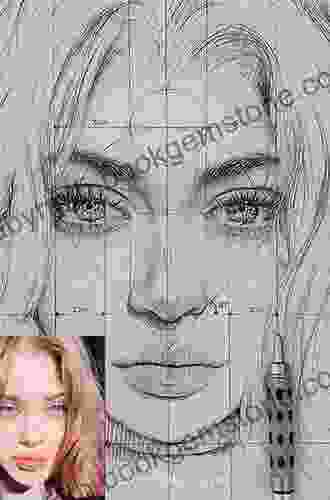
 Jarrett BlairUnveiling the Secrets to Drawing Realistic Faces: A Comprehensive Guide to...
Jarrett BlairUnveiling the Secrets to Drawing Realistic Faces: A Comprehensive Guide to... Dwayne MitchellFollow ·18.3k
Dwayne MitchellFollow ·18.3k Felipe BlairFollow ·10k
Felipe BlairFollow ·10k Pat MitchellFollow ·13.1k
Pat MitchellFollow ·13.1k Andy HayesFollow ·8.4k
Andy HayesFollow ·8.4k Douglas FosterFollow ·10.5k
Douglas FosterFollow ·10.5k Neil ParkerFollow ·12.2k
Neil ParkerFollow ·12.2k Dan BellFollow ·4.6k
Dan BellFollow ·4.6k Noah BlairFollow ·6.9k
Noah BlairFollow ·6.9k
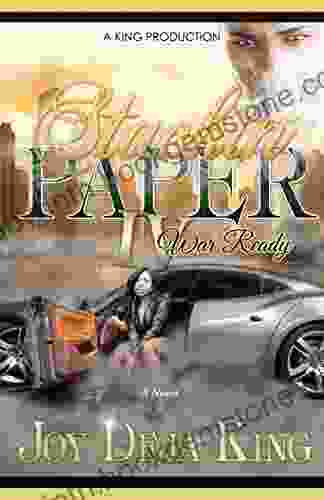
 Billy Peterson
Billy PetersonStackin' Paper Part War Ready: A Comprehensive Guide to...
In today's competitive financial landscape,...

 Jedidiah Hayes
Jedidiah HayesDennis Valder: Unveiling the Enchanting World of Cuba's...
In the heart...

 Ryan Foster
Ryan FosterDelving into the Captivating Enigma of The Green Season...
In the verdant tapestry of literary...
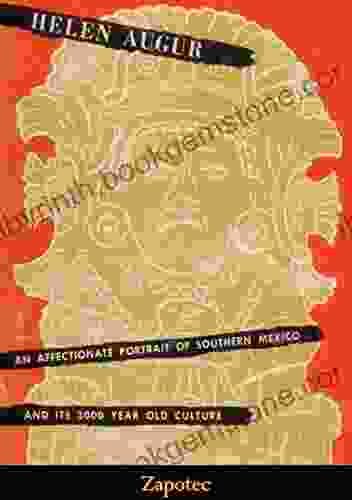
 Jeremy Mitchell
Jeremy MitchellZapotec Helen Augur: A Visionary Leader and Cultural...
In the heart of...

 Larry Reed
Larry ReedSci-Fi Alien Warrior Romance: A Tribute to the Brides of...
In the vast expanse of the...
4.1 out of 5
| Language | : | English |
| File size | : | 3941 KB |
| Text-to-Speech | : | Enabled |
| Screen Reader | : | Supported |
| Print length | : | 53 pages |


